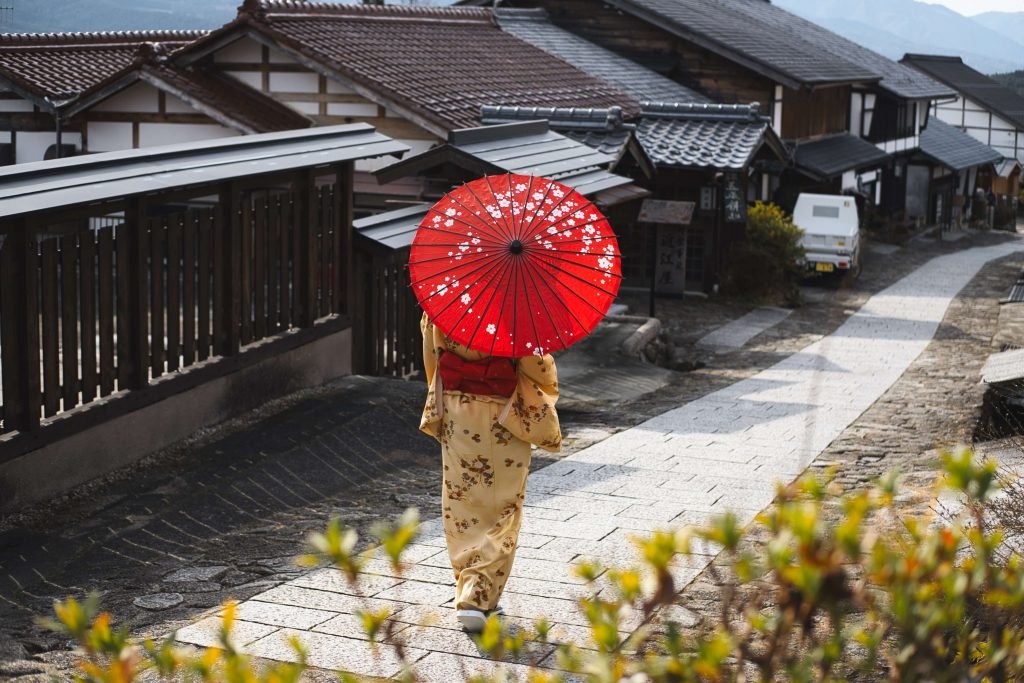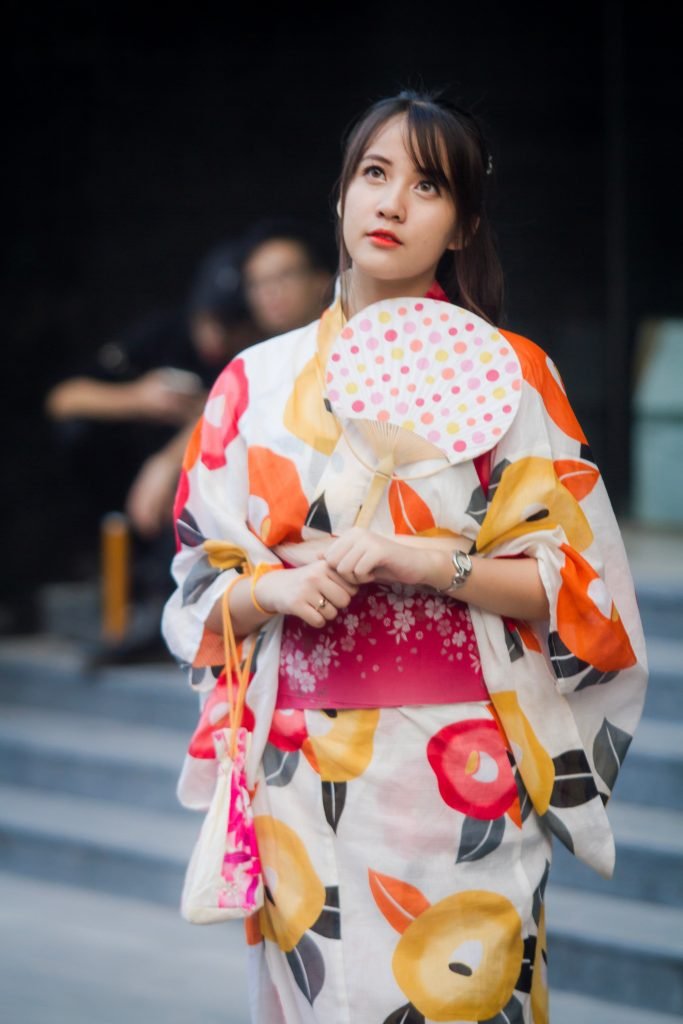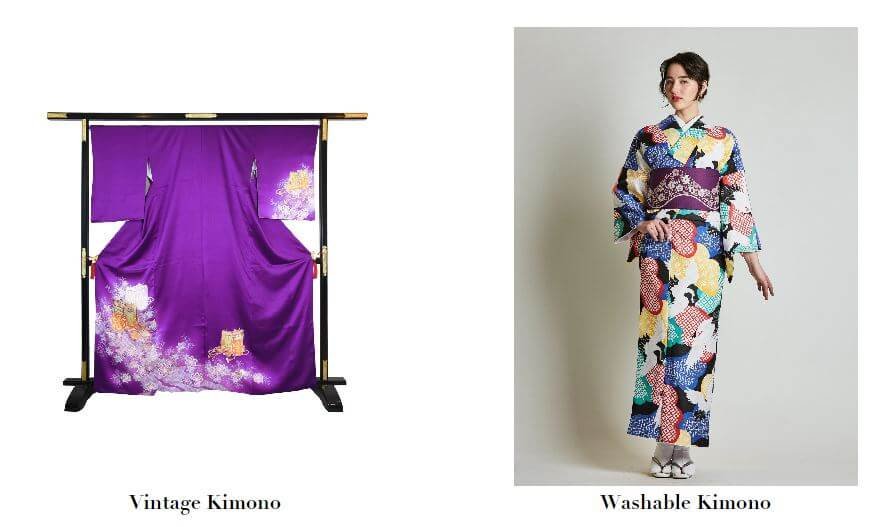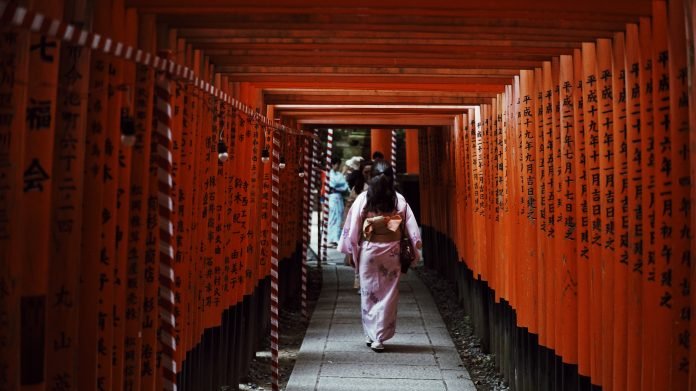If you’ve just come to Japan and are looking to immerse yourself in the culture, fashion is a great way to start. To get the very best, the Kimono and Yukata are two viable options you should consider.
From its ancient lineage through the Han Dynasty, and its adoption through the Edo period in Japan, the Kimono has had many centuries of aesthetic evolution within Japanese culture and holds a sacred place among its people.
On the other hand, the Yukata – which follow the same straight seam and wide-sleeve formula of most Japanese garments – was first adopted in Japan as bathrobes, and later evolved into everyday use as suitable clothing for the hot summer months when light clothing is often required.
If you’re looking to explore Japan, you might as well learn about its culture and incredible people. Donning a traditional outfit is a great way to immerse yourself into the subtle strength of Japanese artistry.
Also, wearing one around town can help you form relationships with the locals as the Japanese who are often shy, and respectful of personal space will sense your enthusiasm and warm to you immediately.
If you live outside Japan or you’ve just moved here, chances are you’ll pick the first Japanese garment you lay your hands on. While it’s okay to do so, there are distinct differences that you should know before you pick one out. The Japanese Objects store offers garments of all kinds.
The section below explores what the Kimono is, the different types and what they signify within Japanese culture. It also explores the Yukata which derives from the Kimono as a great option for cultural immersion while you enjoy your time in the land of the rising sun.

Kimono
These are the official Japanese wear for formal occasions such as wedding and graduation ceremonies, tea parties and other social functions.
They are usually made of silk and come complete with the “Obi” sash which is tied across the midsection along with other attending accessories. Shop Japan Objects stocks a wide range for your absolute pleasure.
Kimonos may come in different styles and in an array of brilliant colors but the staple of this traditional Japanese style, as is with all of them is the T-shaped shoulders and flowy, loose sleeves. Below are the widely used variants, and how wearing one is interpreted within the normative culture of Japan.
Furisode
These are a formal style worn primarily by single women in Japan. They feature a short swinging sleeve which has a single attachment to the body; at the sleeves.
In the past they were worn by young women at their coming of age events. However, in modern times, the rules are less stringent and they may be worn by women of all ages as formal wear.
Homongi
The Homongi was worn primarily by married women as the appropriate way to dress when visiting with friends or participating in formal occasions. Current definitions are a lot weaker compared to the past and so, they may be worn without any real constraints in 2020.
Komon
Unlike the first two, the komon was made to serve everyday needs. It can be worn about town while grocery shopping or to any informal occasions.
Mofuku
The Mofuku is worn when one is mourning the loss of a loved one or an acquaintance of some importance. For the most part, this Kimono comes in a monochrome combination and avoids unnecessary colour.
In recent times, definitions between the types of Kimono have become a lot more fluid as the item has become a global product. To this end, the Japan object store does not use traditional labelling methods. Instead, the online store sells Kimonos of great quality at affordable prices to many within and outside.


Yukata
While a Yukata is very similar to a Kimono, they’re differences are quite salient. Unlike a Kimono, a Yukata is made with a lighter fabric making it more comfortable, and fit for casual events.
Also, since the fabric is thinner than the considerably thick fabric of Kimono, it’s easier to style and encourages more freedom and mobility. Girls wear Yukata with several adornments and drawstring bags to Japanese festivals.

Kimono v Yukata: Why should you care?
One of the more profound aspects of life in Japan is its orderliness, and how everything works how it’s supposed to. From the choice of what to wear to the tone of voice used while speaking, buying, and owning one can help you learn about and blend into life in Japan as smoothly and as seamlessly as possible.
If you’ll be attending a wedding or any formal event while you’re in the country, a Kimono is the fashion way to go as it is the traditional style in Japan. Also, in specific formal situations, choosing a western-style of cloth over a Kimono can be dicey, as you can end up sticking out like a sore thumb. On the other hand, when you wear a Kimono or Yukata, you cannot go wrong in Japan.
Also, Japan is famous for hosting some of the most colourful festivals in the world, and a Yukata is the official traditional wear for these festivals. To become one with the land, go to Japan Objects store, and explore the wide range of Japanese dress.
Kimono Vs Yukata: What’s the difference?
While they are similar at first glance, once you know what to look out for, they’re quite different.
If you’re looking to dress in the traditional formal attire, a Kimono is what you want. Usually, it’s made with heavy, silk or brocade fabric, and is more expensive than Yukata. Kimonos are designed with extra layers inside and worn in multiple colours.
These layers are lined during autumn and spring, padded during the colder months to provide warmth. Also, Kimonos are worn by both men and women and can be styled all year round. They’re also different designs of Kimono which track the wearer’s social status.
On the other hand, Yukata is a less formal attire made with a thinner, much lighter, and breathable fabric, which is usually cotton. It’s also less expensive than Kimono. Because it’s literally the casual wear of traditional Japanese outfits, it’s more fluid, and people are allowed to experiment with it.
Young ladies usually wear Yukatas in bright, colourful designs and accessories with fancy hair clips, flowers, drawstrings, and bags which provide a compelling combination of simplicity and edge.
While Kimonos have a more keen association with the feminine, young males have also taken to wearing Yukatas as well. In Japan, Yukatas are the official summer wear and are also used as a bathrobe in certain circles.
Kimono Vs Yukata: How to know what’s what?
Identifying a Yukata from a Kimono can be sometimes tricky but they’re few elements that could give you pointers.
Season
If it’s not summer then it probably is not a Yukata. Yukatas are easy slip-ons Japanese wear during summers to attend social events including festivals and summer parties. This is because it’s easier to style and promotes freedom of movement.
Also, the fabric of Yukatas are too lightweight to withstand Japan’s chilly spring and autumn and the freezing cold of winter. On the other hand, Kimonos are more suited to the cold as they generally come in multiple layers which can be ideal when it’s chilly.
Collar
Yukata are more similar to slip-ons or bathrobes making it a much easier style option. It is also worn with just one collar while a Kimono has at least two; one original collar and the Nagajuban collar which is worn inside a Kimono as is just underneath the first collar. Also, some prefer to add extra ruffles to their Yukatas for more style but this is distinctly different from the Kimono juban collar.
Material
If it’s made of cotton other than silk or brocade, then it’s a Yukata not a Kimono.
Extra decorations and styling: The traditional styling for Kimono is flat on tied across the midsection.
Because Yukatas are more casual people like to experiment with the Obi and you may observe a style known as the “Heko-Obi” on display.
“Heko-Obis” are soft, scarf-like wraps as opposed to the stiffer, flat Obi. Sometimes Yukatas are worn with false Obi jime, or an Obi that has been folded in a fancy way at the front to show off the reverse color style.
Kimono Vs Yukata: Which is better?
The Kimono and Yukata are worn differently for different functions so it’s advisable to own at least one of them both. The Kimono is very formal, worn with a Nagajuban underneath which preserves and keeps it clean as it’s quite difficult to wash. The Yukata, on the other hand, is casual and can be washed as often as possible.
For wedding ceremonies, family functions and other formal invitations, it advisable to wear Kimono if you’re looking. For evening parties, festivals and other informal social events, you can easily wear a Yukata if you choose.
As a nation with many active volcanoes, Japan is blessed with over a thousand Onsens (hot springs) which serve as communal baths. This is something you definitely want to experience during your stay here. To do that you’d need a Yukata as it is the official robe before and after your bath in an Onsen.
Kimono Vs Yukata: Are there any rules?
The one important rule of wearing both Kimonos and Yukatas is you must style them with the left panel over the right. Wearing the right panel over the left is considered highly offensive in Japan as this is how the Japanese dress their dead.
To avoid major social faux pas, remember to always lay the left panel over the right. To double-check, you should be able to slip your right arm underneath the top panel of your Kimono or Yukata, to either adjust or tighten.
Kimono Vs Yukata: Why should I buy from Japan Objects store?
Japan Objects is a cultural magazine and online store that’s committed to preserving the rich history of Japanese traditional fabrics by curating and selling the best Kimonos and Yukatas the country has to offer.
Authentic Kimonos can be difficult to find especially if you do not know what to look out for. Also, they come at a very steep price. To this end, Japan Objects leverages its extensive contact with prolific dressmakers in Kyoto to provide you with the beautifully crafted Kimonos and Yukatas at very affordable rates.
Japan Objects Store: Sourcing
Every piece of clothing up for sale at Japan Objects has been well vetted and painstakingly selected from the numerous offerings in Kimonos and Yukatas within the country.
Japan Objects clothing store offers you an array of Kimonos and Yukatas crafted with excellence to choose from at unbelievable rates.
If you live outside of Japan and wish to explore this ancient yet highly stylistic fashionable clothing, Japan objects offer you extensive Kimono options for you to shop anywhere in the world.
Japan Objects Store: Shipping
The online store ships directly from Tokyo to all parts of the world. If you live in Japan, you can receive your package within 2-3 days from the time of order. Also, there’s the extra perk of free shipping for orders above $99 as well as free packaging on selected items when you buy from Japan Objects Store.
With Japan Objects store, in case the need arises, you get a change of an outfit previously bought or a full money refund within 30 days of receiving your order. However, this comes attached to terms and conditions. You should peruse the Japan objects store refund policy for more details.
Japan Objects Store: Other Offers
Besides a wide range of offerings, Japan Objects Store also offers in-depth guidelines to styling Kimonos and other Japanese fashion wear. The guideline covers what you need to wear with a Kimono or Yukata and how to wear it correctly. This demystifies and answers all the questions about traditional Japanese fashion so that when you wear them, you never have to worry about anything.
Buying from Japan Object store gives you an all-round wholesome experience of shopping for traditional Japanese wear. Not only do they ship affordable clothes from designers, and Japanese dressmakers, they also provide you with all the information you need to style Kimonos and Yukatas to the absolute best.
Conclusion
Japanese wear is an integral part of the country’s culture, and it’s necessary to acclimatise to this incredible, historically rich country. Kimono are exceptionally clothing, simple, stylish, and classic. Wearing Kimono, Yukata, and other forms of Japanese clothing is an art. Walking, sitting, eating, just about every action you do in a Kimono is as calculated and decided as freestyle dancing.
Kimonos and Yukatas can be worn to wedding ceremonies, graduation ceremonies, funerals, restaurants, and just about anywhere in Japan. Knowing the difference between these two Japanese traditional styles and how to wear them correctly is also quite important. Yukatas are the casual wear of Kimonos that are worn during summer with accessories and other fittings to make it even more stylish.
The Japan Objects store comes in with this online store, you’d be able to get the best of Kimono and Yukata available in Japan. The store curates and sells directly from designers and can be delivered to you within 1-3 days of ordering.
Because of its extensive catalogue of dressmakers, you can find quality Kimonos and Yukatas that fit you. Also, in Japan Objects stores, the prices are very pocket friendly, and as a result, you can get high-quality Kimonos and Yukatas for relatively affordable prices.
If you also need further information on styling this wear, the Japan Object Magazine holds extensive guidelines on the dos and don’ts of wearing traditional Japanese outfits.
Best used cars in Japan: If you spend travelling around Japan, buying a used car is cost effective and reliable. Japanese used cars offer many features for a good price. Click this link to find the best used cars in Japan.



